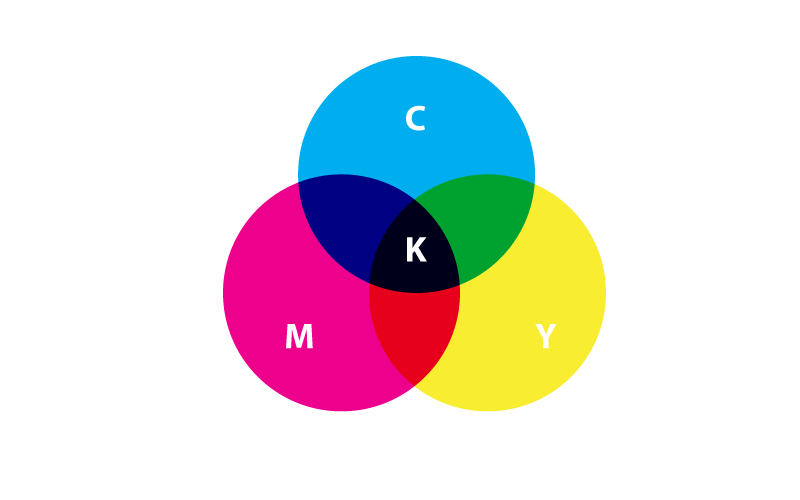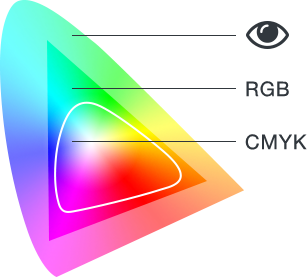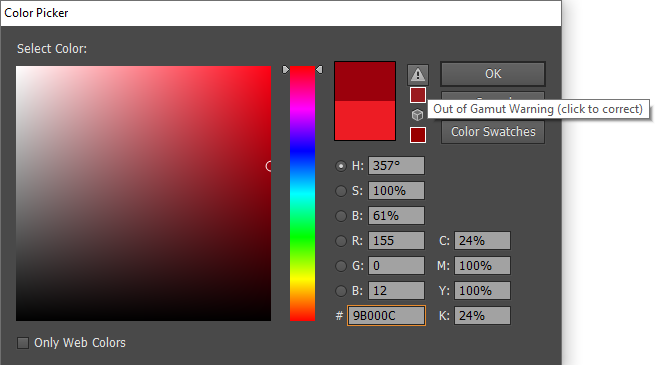When it comes to color, two terms that are often thrown around are RGB and CMYK. While both represent ways to mix colors, they are fundamentally different in how they work and are used. Whether you’re a designer, photographer, or simply curious about color theory, understanding the difference between these two color models is crucial, especially when it comes to printing.
Let’s break down what RGB and CMYK mean and when to use them.
What is RGB?
RGB stands for Red, Green, and Blue—the three primary colors of light. This color model is used primarily in digital devices, such as monitors, televisions, smartphones, and cameras, because it’s based on light. The RGB color model is additive, meaning that when you combine the colors in varying intensities, you add light to the mix.
In RGB, the colors are created by mixing different intensities of light. The more light you add, the closer you get to white. This is why screens use RGB—because they rely on light to create images.
What is CMYK?
On the other side of the spectrum, CMYK stands for Cyan, Magenta, Yellow, and Key (Black). This color model is used for print materials and works on the principle of subtractive color mixing. Instead of adding light like RGB, CMYK is based on the way ink absorbs (subtracts) light. The more ink you add, the darker the colors become, ultimately leading to black.
In CMYK, colors are created by layering different percentages of these four ink colors:
The CMYK model works by subtracting varying amounts of light as ink is laid down. When all the colors are mixed, the result is black. This is why CMYK has a Key (Black), as it helps achieve a true black color, which is difficult to produce by mixing the other three colors alone.
Key Differences Between RGB and CMYK
 RGB |  CMYK |
| RGB is additive: you add light to create colors, and the more light you add, the lighter the color gets. | CMYK is subtractive: you subtract light with ink, and the more ink you add, the darker the color becomes. |
| RGB is primarily used for digital screens (computers, cameras, TVs, etc.). | CMYK is used for print materials (magazines, brochures, posters, etc.). |
| In RGB, the colors are made by combining different intensities of red, green, and blue light. | In CMYK, the colors are made by combining varying amounts of cyan, magenta, yellow, and black ink. |
| The RGB color model can produce a wider range of colors (called a gamut), and can can display brighter, more vibrant colors. | CMYK, which is limited by the types of inks used in printing, may result in more muted tones and slightly less vibrant output, especially for certain shades of green or blue. |
The below example shows the comparison between page colors as shown on a computer screen and on a printed page. The RBG file was converted to CMYK and as you can see, the colors on the page less vibrant and a bit more muted.


Why Does This Matter for Printing?
When preparing artwork for print, it’s essential to design in the CMYK color model to get a better sense of how your colors will appear on paper. RGB designs created for screens often appear more vibrant than they will on paper because screens use light, while printing relies on ink.
Printers use cyan, magenta, yellow, and black inks to produce a wide range of colors. These four inks are mixed in various proportions to achieve the desired result. If you send an RGB file to us without converting it to CMYK, we will automatically convert the file and our printers might not be able to replicate the colors exactly as they appear on screen. This could result in colors looking duller or different from what you expected.

Converting RGB to CMYK
Converting colors between RGB and CMYK can be tricky. Since the two color models have different gamut’s, not every RGB color can be perfectly matched in CMYK, and vice versa.
When designing for print, it is best to use CMYK from the beginning ensures consistency. If you design your graphics in RGB and convert them to CMYK later, the conversion may result in undesirable color shifts. For example, vibrant greens or bright blues might appear dull or muddy in print. Working in CMYK ensures that the colors you see in your design are as close as possible to what will be printed.
To avoid unexpected results:
- Design with CMYK in mind if the final product will be printed.
- Proof your design by printing out a test sheet on the intended printer before going to press.
Ensuring your workspace is in CMYK
- Before you start working on your design, make sure your document color mode is set to CMYK.

2. When choosing colors for your design, the color picker will warn you if the color you have chosen is out of the CMYK gamut.

We are able to convert your file from RGB to CMYK for you to preview and get an idea of the print result on screen. Purchasing a physical print proof prior to mass production is always a good idea as well.
Conclusion
In summary, RGB and CMYK are two different color models that serve specific purposes in the world of design and printing. Understanding when and how to use each color model will ensure your designs look exactly as you intend, whether you’re designing for a website or preparing artwork for a printed product.
By keeping these differences in mind, you’ll be able to optimize your design process and achieve the best possible color representation for your printed projects.







